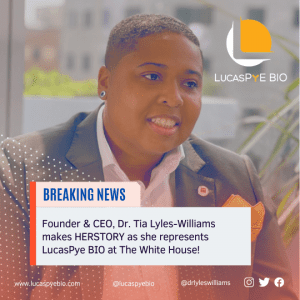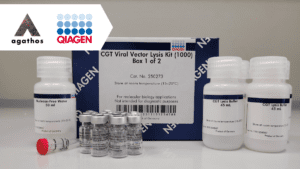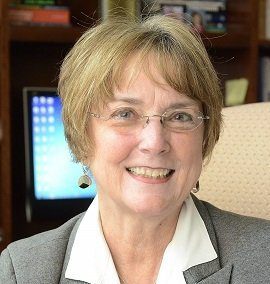
Big Data in Biomedical: Quantum and AI to Problem Solve and Optimize
The BioHealth Capital Region Forum offered many insights into the state of the industry, but the most prevalent theme was certainly big data. Panelists and keynote speakers across multiple events spoke about the importance of data in the biohealth and life sciences industry and how artificial intelligence will help the sector innovate.
Keynote speaker Chris Monroe, co-founder and chief scientist at IonQ, discussed how biotech experts can use quantum mechanics and quantum computers to solve problems within the healthcare industry. Monroe is a faculty member at Duke University and the University of Maryland and studies how Q-bits and quantum computers can help optimize complex problems.
“Quantum computers look to be able to solve difficult models,” Monroe said. “Models are all over the place. It’s not exactly just big data and AI, but how you use that big data to refine models and solve those models, like optimizing a stock market portfolio or optimizing how certain compounds would interact to create an interesting drug.”
Monroe said there are plenty of ways to apply quantum computers to work in biotech. Because quantum computers measure all the different ways Q-bits interact on waves, they would be great at solving problems that involve sequencing the human genome. These problems often require optimization to solve, which is one of quantum computers’ strong suits.
Specifically, Monroe called on companies and laboratories to get into quantum work by partnering with academic institutions.
“With quantum computing, I think the culture needs to change because computing is changing. In the interim, we have a big opening for national laboratories to take the lead because they have everything,” Monroe said. ‘They have engineers, seasoned engineers that build devices, and they also have the academic mindset we see at universities, and they’re starting to get up to speed.”
The panel “Biomedical Big Data: How to Get Real Smart in a World Full of Artificial Intelligence” showcased leaders from three different AI companies who spoke on the applications of AI in the life sciences field. One of those leaders, Ellington West, CEO of Sonavi Labs, uses AI to help diagnose and treat respiratory diseases. West became interested in solving the problem after learning that pediatric pneumonia is the leading cause of death of children worldwide.
“We knew the only thing standing between these children and their ability to live and lead a healthy life was an accurate, timely diagnosis,” West explained. “We had developed an algorithm that could identify that in these patients and empower community health workers to identify it. For me, it was, “how could I not, how could we not start a company around this solution?”
Vin Singh, the founder and CEO of Bullfrog AI, agreed that solving a specific problem is the key to running a successful AI company. Developing an algorithm that can help solve that problem is then the goal. Singh himself got into AI after working with a company on clinical trials and seeing so many fall through for preventable, logistical reasons.
“That was the point where I said, we have to be able to make a difference in this, and improve the chances for success,” Singh said.
The panelists also discussed the difference between the hope and hype around AI, which the panelists agreed were closely intertwined. While they have hope for the world of artificial intelligence and how it can help patients in the future, they have also experienced a lot of hype and confusion around the capabilities of AI.
“The world wants these immediate results from AI. It’s complicated, it’s going to take time, we have to be patient,” Singh said. “Any time you’re trying to accomplish anything great like what you’re hearing on this panel, it’s not easy.”
Phlow is another company using artificial intelligence and data to help patients by promoting smarter production of pharmaceutical ingredients. During their fireside chat, co-founders Eric Edwards and Frank Gupton discussed their mission to revolutionize the supply chain and encourage domestic production of medicines.
“For years, however, the healthcare system has been reactive instead of proactive when it comes to the essential medicine supply chain, managing drug shortages instead of preventing them,” Edwards said.
Phlow’s primary purpose is to model, simulate, and prevent future shortages of medicines before they occur, so patients throughout the country are never without the medications they need.
“Historically these models relied primarily on supply-side data,” Edwards said. “But moving forward, the widespread deployment of electronic healthcare records, other provider-based information technology systems, and point of care data really provides an ideal opportunity for Phlow to enrich these models with demand-side data. And [we can] combine these data sources together to create the next generation of robust, real-time predictive capabilities necessary to prevent drug shortages.”
The leaders from the various companies represented at the BHCR forum were all in agreement about one thing: data and artificial intelligence are here to change the biotech and life sciences industries. But progress requires companies, agencies, and educational institutions to work together to work on problems.
“When I think about what we’re hopeful for, it’s really seeing a drive of adoption in ways where we’re really able to rely on these algorithms and this AI to really help us collectively make the best decision,” Ellington West said. “When we all allow that vulnerability, really see it as a partner, we will move so much quicker toward really reaching the type of patients that we need to.”





